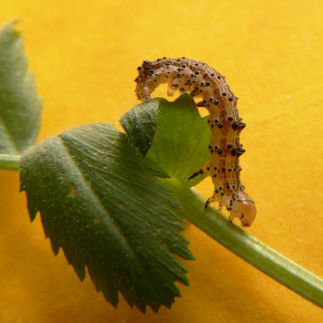New EU Crop Protection Regulation has serious economic consequences
Advertisement
Research by Wageningen UR has revealed that possible new EU crop protection regulation will have serious economic consequences for the Netherlands. Yields could decrease by as much as 50 to 100 percent due to the major reduction in pesticides allowed for crops such as roses, chrysanthemums, cucumbers, Brussels sprouts, spring-sown onions, tulips and ornamental shrubs. This could make Dutch cultivation unviable and even mean that cultivation stops altogether in the Netherlands.
Wageningen UR studied two scenarios that are currently on the table. Firstly the European Parliament's position after the first reading of the common position of the European Commission and Council of Ministers (the 'EP-cut-off' scenario) and secondly the common position of Commission and Council of Ministers (the 'EC-CMR/ED' scenario).
The studies show that the EP-cut-off scenario will result in yields being reduced by 50 to 100 percent due to the banning of a large number of pesticides for roses, chrysanthemums, cucumbers, Brussels sprouts, spring-sown onions, tulips and ornamental shrubs. This makes cultivation in the Netherlands unviable and will have enormous consequences for the production of and international trade in these crops. Cultivation may even disappear from the Netherlands altogether, which would have a major economic and social impact.
Despite the fact that the number of pesticides that would be banned in the EC-CMR/ED scenario is much lower, this scenario would also have a considerable impact on most of the abovementioned crops.
In the proposal of the Council of Ministers and the European Committee for a new Crop Protection Regulation, the criteria for the approval of pesticides are no longer based on risk alone. Other criteria involved include the intrinsic carcinogenic, mutagenic, reprotoxic (CMR) and hormone disruptive (ED: Endocrine disruption) characteristics of substances. The European Parliament decided in autumn 2007 that more active substances should be banned from the EU.
The research shows that the banning of a large number of pesticides used with roses, chrysanthemums, cucumbers, Brussels sprouts, spring-sown onions, tulips and ornamental shrubs could result in yield reductions of 50 to 100 percent. This will render cultivation in the Netherlands unprofitable and have extreme consequences for the production of and international trade in these crops.
Yield losses for seed potatoes, table potatoes, winter wheat, tomatoes and apples are estimated at 15 to 32 percent. The profit made from cultivating these crops will be significantly reduced, which will put pressure on viability and make it difficult if not impossible to pay fixed costs. In addition, with so many pesticides being banned in this scenario, other problems are likely to emerge as diseases, pests and/or weeds become resistant to the remaining pesticides and harder to control.
Other long-term effects are hampering weed management, a growing nematode population and an increase in diseases and pests that were also affected (side effects) by the former pesticides. The long-term effects of this study were not formulated into exact figures but are also likely to have a significant impact.
Although the number of pesticides banned in this scenario is much smaller than in the EP scenario, it will still have a considerable impact on most crops.
Ornamental shrubs, spring-sown onions, roses and chrysanthemums will be affected by the lack of pesticides to such a degree that cultivation will result in losses or become economically unviable. Fixed costs will become hard or impossible to pay. There will also be yield losses in the cultivation of seed potatoes, table potatoes, sugar beet, Brussels sprouts, cucumbers, tomatoes and apples and these crops will become less economically viable. Only the cultivation of winter wheat will be relatively unaffected despite the fact that several pesticides will be banned for this crop as well.
This scenario may also lead to long-term effects including increased resistance and a growing nematode population.


























































